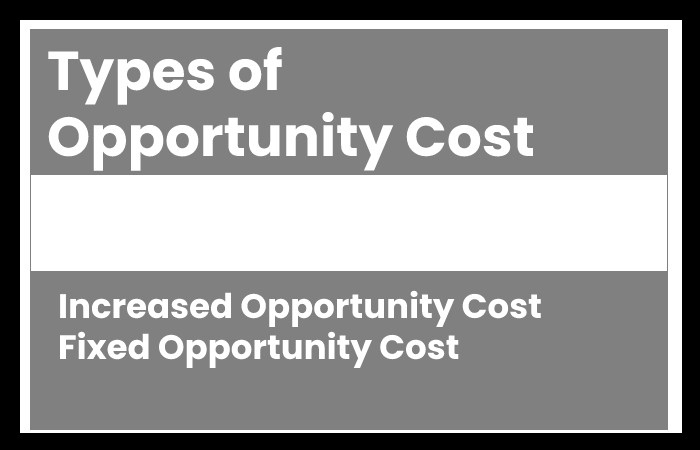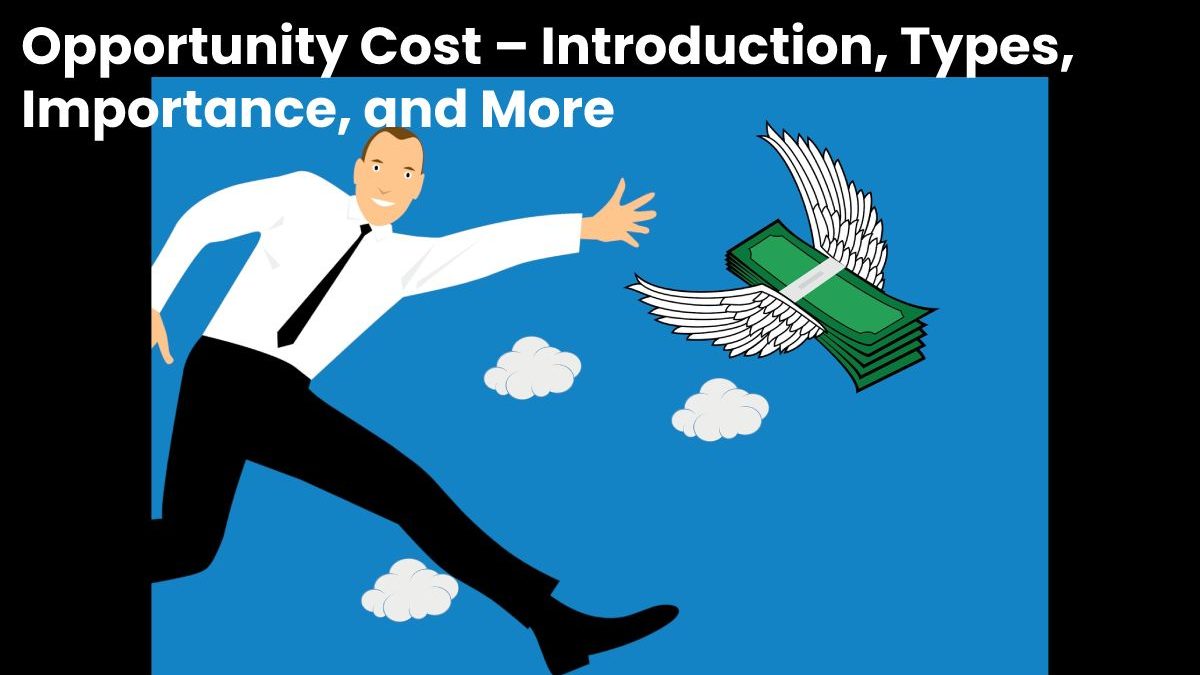Table of Contents
Introduction
Opportunity cost, also known as Alternative cost, allows an investor (or company) to measure the benefits of giving up one investment in favor of another. This economic concept is an essential tool for decision-making.
In Finance, it Can be Calculate As:
Opportunity cost = return of the best-missed option – the return of the chosen option.
Calculating the opportunity cost makes it possible to understand better the importance of particular investment decisions to choose the most profitable. In this case, it is necessary to evaluate both the potential return of each opportunity and its risks: the opportunity cost is always probable. That is, we do not know the amounts to evaluate. In economics, we must consider the externalities, the external elements that can positively or negatively affect the investment we make or give up.
Opportunity Cost Swaps
The question of cost can be express in several situations and different ways, often resulting from judging between times.
The work/leisure trade-off base on giving up more pay for more free time: its solution depends on how time is valued in monetary units;
choosing between two investment strategies: choice of investment term, annual or monthly return, and probability of recovering the invested amount;
The choice between continuing to study for a more extended period or entering into working life: earning money slower but getting once in the labor market a higher salary thanks to a better qualification;
More realistically, the choice between price and product quality, for example, food.
It is closely dependent on how time and other quantities (leisure, quality, risk, patience) value in monetary units, making it a difficult value to quantify.
The Opportunity Cost of Financing
In corporate Finance, the so-called opportunity cost of the economic and financial structure refers to the resources we can earn if we put all of our money to work. For example, if we have money in an unpaid account at the bank, we can deposit it at 3%, which would be an opportunity cost of 3% of our total funds.
It can also apply to using the company’s resources for its liabilities because if we use debt instead of using these resources and net worth, the leverage from using debt could mean. That is, without using resources, we will get the same benefits.
Examples of Opportunity Cost
If we have 100,000 EUR and we want to invest it, imagine that we can start a vegetable vendor or invest in 12,500 shares of Repsol, which are trading at 8 EUR on the Madrid Stock Exchange. Since we don’t understand much about financial markets, we decided to choose PM, which gives us a profit of 20,000 euros after two years, while Repsol’s share increased to 11 EUR during the same two years. In this instance, the opportunity cost would be:
Vegetable Seller Allowances: 20,000
Repsol share interest (rejected): (11-8) x 12,500: €37,500
Opportunity cost: 37,500 – 20,000: 17,500 euros
Another example of opportunity cost is the one that a student has to face while choosing to study or work. At the end of your studies, you can choose between getting a master’s degree in two years or working in your uncle’s shop. Where offers 1,250 euros per month. If you decide to study rather than work, the opportunity cost of earning a master’s degree in two years instead of working is €30,000, or €1,250 per month for two years.
Also Read: Cloud Migration – Introduction, Strategies, Benefits, and More
Types of Opportunity Cost

As long as the company has limited resources, senior business leaders will need an opportunity cost analysis. Well-known entrepreneur Sam Madden explained that It is basically what you let go of when making a decision.”
But the costs include not only cash. But all the actual costs of making one choice over another, including lost time, energy, and psychological benefits of pleasure.
Therefore, it is a critical factor in decisions made by consumers and other decisions such as production, time management and capital allocation.
[bat tweet = “Investors often view opportunity costs as benefits derived from taking alternative financial actions.” username = “gene word”].
It becomes beneficial as it evaluates the cost and benefits of alternatives. It is usually express in monetary terms. By stating the price of one option in terms of the missing benefits of the other, marginal costs and benefits can be compared.
There are two types of opportunity costs:
Increased Opportunity Cost
It is that which arises when resources, labor and capital are not heterogeneous or are not use in equal proportions for production. Therefore, resources become inefficient to produce those goods or services.
Fixed Opportunity Cost
It is a situation where the cost of pursuing an opportunity does not rise or fall over time. Even the benefits derived from the activity change in some way.
Also Read: Macro Virus – Introduction, Risks, Symptoms, and More
The Importance of Opportunity Cost
The importance of opportunity cost can be seen every time we decide. It is an essential part of our daily life without realizing it. Because calculating and monitoring them allows us to evaluate the negative or positive consequences of any choice we make. Its application is significant in the business and corporate world. Taking a decision lightly can result in massive capital loss and many years of effort and work.
Thanks to opportunity costs, we can define profit as lost or not taken into account in the alternative course of action. Which discards in favor of another chosen alternative. It allows one to compare and select the most appropriate option before deciding. However, it must emphasize that cost is not an actual cost in terms of cost-performance accounting. It only serves to gauge the potential value of the missing options.
Also Read: Calligraphy Cursive Writing – Introduction, Benefits, Basics, and More
What are the Characteristics of Opportunity Cost?
As per the definition of opportunity cost, any unused stock carries the price of an option. Two types characterize it, increasing opportunity cost and fixed opportunity cost.
High Opportunity Cost: It occurs when resources are not homogeneous and are not present in equal proportions to produce products. Therefore, these resources cannot achieve the goal of having enough goods and services. In other words, resources are not equally productive.
Fixed opportunity costs: Ricardian costs occur when the resources used for production replace each other without any consistency. However, they are all of the same quality, so firms give up a quantity of a product to produce a new amount. Thus, the possibilities of production and consumption remain the same.
Conclusion
It is the value of the best choice that was not made. The one you stop “winning” by creating a particular decision. And if we give it another touch, you might lose judgment if you don’t do it right.
It helps us understand what we lose or fail to gain when making a particular decision. Especially considering time and money. Financial decisions, which we will see later, are closely related to it.
Also Read: Calligraphy Cursive Writing – Introduction, Benefits, Basics, and More

